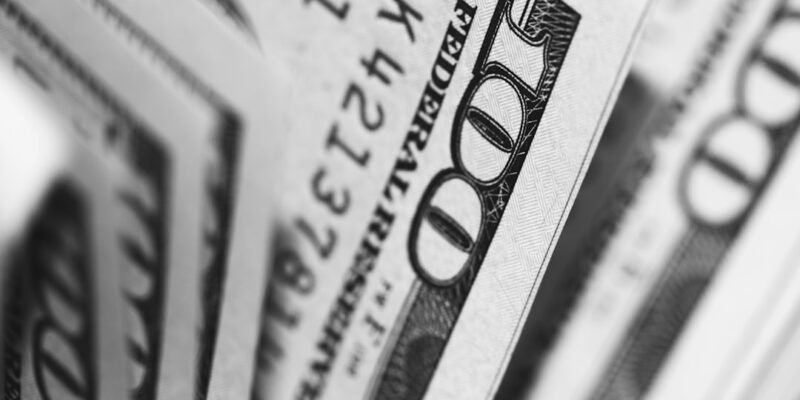
Maximizing Your Savings with High-Yield Accounts
High-yield accounts have become increasingly popular in recent years as people look for ways to make their money work harder for them. These accounts offer higher interest rates than traditional savings accounts, allowing individuals to earn more money on their savings over time. In this article, we will explore what high-yield accounts are, how they work, and the benefits they offer. We will also discuss how to choose the best high-yield account for your needs, compare different options, and provide tips for opening and managing a high-yield savings account. Additionally, we will explore strategies for maximizing your savings, building an emergency fund, and investing in your future. Finally, we will discuss how high-yield accounts compare to other investment options and how to incorporate them into your financial plan.
Key Takeaways
- High-yield accounts offer higher interest rates than traditional savings accounts
- Benefits of high-yield accounts include increased savings and potential for compound interest
- Consider factors such as interest rates, fees, and terms when choosing a high-yield account
- Strategies for maximizing savings include automatic deposits and limiting withdrawals
- High-yield CDs and other savings options can offer even higher interest rates, but may have longer terms and penalties for early withdrawal
Understanding High-Yield Accounts: What They Are and How They Work
High-yield accounts, also known as high-yield savings accounts or high-interest savings accounts, are a type of savings account that offers a higher interest rate than traditional savings accounts. These accounts are typically offered by online banks or credit unions and are designed to help individuals grow their savings at a faster rate.
One of the key differences between high-yield accounts and traditional savings accounts is the interest rate. While traditional savings accounts may offer interest rates as low as 0.01% or even lower, high-yield accounts can offer rates as high as 2% or more. This means that individuals can earn significantly more money on their savings over time.
High-yield accounts generate higher interest rates by investing the funds deposited by customers in various financial instruments such as government bonds or corporate bonds. The interest earned from these investments is then passed on to the account holders in the form of higher interest rates.
Benefits of High-Yield Accounts: Why They Can Help You Save More Money
One of the main benefits of high-yield accounts is the higher interest rates they offer. Higher interest rates mean that individuals can earn more money on their savings over time. For example, if you have $10,000 in a high-yield account with an interest rate of 2%, you would earn $200 in interest over the course of a year. In comparison, if you had the same amount in a traditional savings account with an interest rate of 0.01%, you would only earn $1 in interest over the same period.
Another benefit of high-yield accounts is the power of compound interest. Compound interest is the interest earned on both the initial deposit and any accumulated interest. This means that as your savings grow, the amount of interest you earn also increases. Over time, compound interest can significantly boost your savings.
High-yield accounts also offer FDIC insurance protection. The Federal Deposit Insurance Corporation (FDIC) insures deposits up to $250,000 per depositor, per insured bank. This means that even if the bank fails, your deposits are protected up to the insured limit.
How to Choose the Best High-Yield Account for Your Needs
| Factors to Consider | Description |
|---|---|
| Interest Rate | The higher the interest rate, the more money you earn on your savings. |
| Minimum Deposit | Some high-yield accounts require a minimum deposit to open the account. |
| Monthly Fees | Some high-yield accounts charge monthly fees, which can eat into your earnings. |
| FDIC Insurance | Make sure the high-yield account is FDIC-insured to protect your savings. |
| Accessibility | Consider how easy it is to access your money, whether through online banking or ATMs. |
| Customer Service | Look for a high-yield account with good customer service, in case you have any questions or issues. |
When choosing a high-yield account, there are several factors to consider. First, you should consider the interest rate offered by the account. Look for accounts that offer competitive rates compared to other options in the market.
Next, consider the fees associated with the account. Some high-yield accounts may charge monthly maintenance fees or transaction fees. Make sure to read the terms and conditions carefully to understand any fees that may apply.
You should also consider the terms and conditions of the account. Some high-yield accounts may require a minimum balance or have restrictions on withdrawals. Make sure to choose an account that aligns with your financial goals and needs.
Another factor to consider is whether you prefer an online or brick-and-mortar bank. Online banks often offer higher interest rates due to lower overhead costs, while brick-and-mortar banks may offer more convenience and in-person customer service.
Comparing High-Yield Accounts: Interest Rates, Fees, and Terms to Consider
When comparing high-yield accounts, it’s important to look at the interest rates offered by different banks. While interest rates can change over time, it’s a good idea to choose an account that consistently offers competitive rates.
In addition to interest rates, you should also consider any fees associated with the account. Some high-yield accounts may charge monthly maintenance fees, transaction fees, or fees for certain services. Make sure to read the terms and conditions carefully to understand any fees that may apply.
It’s also important to understand the terms and conditions of the account. Some high-yield accounts may require a minimum balance or have restrictions on withdrawals. Make sure to choose an account that aligns with your financial goals and needs.
Tips for Opening and Managing a High-Yield Savings Account
Opening a high-yield savings account is a relatively simple process. First, you will need to choose a bank that offers high-yield accounts and meets your needs. Once you have chosen a bank, you can typically open an account online or by visiting a branch in person.
To open an account, you will need to provide some personal information such as your name, address, social security number, and date of birth. You may also need to provide proof of identity and address, such as a driver’s license or utility bill.
Once your account is open, it’s important to manage it effectively. This includes regularly monitoring your account balance, reviewing your transactions, and updating your contact information if necessary. It’s also a good idea to set up alerts or notifications to stay informed about any changes or activity in your account.
Automating deposits and withdrawals can also help you manage your high-yield savings account more effectively. Setting up automatic transfers from your checking account to your high-yield account can help you save consistently without having to remember to make manual transfers.
Maximizing Your Savings: Strategies for Depositing and Withdrawing Money
To make the most of your high-yield savings account, it’s important to have a strategy for depositing and withdrawing money. One strategy is to set up automatic transfers from your checking account to your high-yield account on a regular basis. This can help you save consistently without having to remember to make manual transfers.
Another strategy is to deposit any extra money you receive, such as tax refunds or bonuses, into your high-yield account. This can help you grow your savings faster and take advantage of the higher interest rates.
When it comes to withdrawing money from your high-yield account, it’s important to be mindful of any restrictions or fees that may apply. Some high-yield accounts may have limits on the number of withdrawals you can make per month or charge fees for certain types of transactions. Make sure to read the terms and conditions carefully and plan your withdrawals accordingly.
Building Your Emergency Fund with a High-Yield Savings Account
A high-yield savings account is a good option for building an emergency fund. An emergency fund is a savings account that is set aside for unexpected expenses or financial emergencies. It’s important to have an emergency fund to cover unexpected expenses such as medical bills, car repairs, or job loss.
When building an emergency fund, it’s recommended to save at least three to six months’ worth of living expenses. This will provide a cushion in case of unexpected events or emergencies.
A high-yield savings account is a good option for an emergency fund because it offers higher interest rates than traditional savings accounts. This means that your savings will grow faster over time, allowing you to reach your savings goals more quickly.
Investing in Your Future: High-Yield CDs and Other Savings Options
In addition to high-yield savings accounts, there are other high-yield savings options to consider. One option is a high-yield certificate of deposit (CD). A CD is a time deposit offered by banks and credit unions that typically offers a higher interest rate than regular savings accounts. With a CD, you agree to keep your money deposited for a specific period of time, such as six months or one year. In return, you receive a higher interest rate.
Another option is a money market account. A money market account is a type of savings account that typically offers higher interest rates than regular savings accounts. Money market accounts often have higher minimum balance requirements and may have restrictions on withdrawals.
Pros and cons of each option
High-yield CDs offer higher interest rates than regular savings accounts and can be a good option if you don’t need immediate access to your funds. However, they typically require you to keep your money deposited for a specific period of time, so they may not be suitable if you need liquidity.
Money market accounts offer higher interest rates than regular savings accounts and provide more flexibility than CDs. However, they often have higher minimum balance requirements and may have restrictions on withdrawals.
Balancing Risk and Reward: High-Yield Accounts vs. Other Investment Options
When it comes to balancing risk and reward, high-yield accounts are generally considered low-risk investments. They offer higher interest rates than traditional savings accounts without the volatility or potential loss associated with other investment options such as stocks or bonds.
However, it’s important to note that high-yield accounts are not completely risk-free. While they are insured by the FDIC up to $250,000 per depositor, per insured bank, there is still a risk that the bank could fail. It’s important to choose a reputable bank with a strong financial standing to minimize this risk.
When comparing high-yield accounts to other investment options, it’s important to consider your financial goals and risk tolerance. If you are looking for higher returns and are willing to take on more risk, you may consider other investment options such as stocks, bonds, or real estate. However, if you are looking for a low-risk option to grow your savings, a high-yield account may be a good choice.
Making the Most of Your High-Yield Account: Budgeting, Saving Goals, and Financial Planning
To make the most of your high-yield account, it’s important to incorporate it into your overall financial plan. This includes setting savings goals, creating a budget, and planning for the future.
Setting savings goals can help you stay motivated and focused on growing your savings. Whether you are saving for a down payment on a house, a dream vacation, or retirement, having specific goals can help you track your progress and make informed financial decisions.
Creating a budget is another important step in maximizing your high-yield account. A budget helps you track your income and expenses and identify areas where you can save money. By allocating a portion of your income to your high-yield account each month, you can ensure that you are consistently saving and taking advantage of the higher interest rates.
Long-term financial planning is also important when it comes to making the most of your high-yield account. This includes planning for retirement, saving for education expenses, and protecting your assets with insurance. By incorporating your high-yield account into your long-term financial plan, you can ensure that you are on track to meet your financial goals.
In conclusion, high-yield accounts offer several benefits that can help individuals save more money over time. With higher interest rates and the power of compound interest, these accounts allow individuals to earn more money on their savings compared to traditional savings accounts. By choosing the best high-yield account for their needs, comparing different options, and effectively managing their accounts, individuals can maximize their savings and achieve their financial goals. Whether it’s building an emergency fund, investing in the future, or balancing risk and reward, high-yield accounts can be a valuable tool in any financial plan. So why wait? Start saving with a high-yield account today and watch your money grow.
FAQs
What is a high-yield savings account?
A high-yield savings account is a type of savings account that offers a higher interest rate than traditional savings accounts. These accounts are typically offered by online banks and credit unions.
How does a high-yield savings account work?
A high-yield savings account works like a traditional savings account, but with a higher interest rate. You deposit money into the account and earn interest on your balance. The interest rate is typically variable and can change over time.
What are the benefits of a high-yield savings account?
The main benefit of a high-yield savings account is the higher interest rate, which allows you to earn more money on your savings. These accounts also typically have no monthly fees and are FDIC-insured, which means your money is protected up to $250,000.
What are the drawbacks of a high-yield savings account?
One drawback of a high-yield savings account is that the interest rate can change over time, which means your earnings may fluctuate. These accounts also typically have limited access to your funds, which can make it difficult to withdraw money quickly.
How do I open a high-yield savings account?
You can open a high-yield savings account online through a bank or credit union that offers these accounts. You will typically need to provide personal information and a minimum deposit to open the account.
What is the minimum deposit for a high-yield savings account?
The minimum deposit for a high-yield savings account varies by bank or credit union. Some may require a minimum deposit of $1,000 or more, while others may have no minimum deposit requirement.
Is a high-yield savings account right for me?
A high-yield savings account may be a good option if you are looking to earn more interest on your savings and don’t need immediate access to your funds. However, if you need to withdraw money frequently or want to earn a higher return on your investments, other options may be more suitable.


















